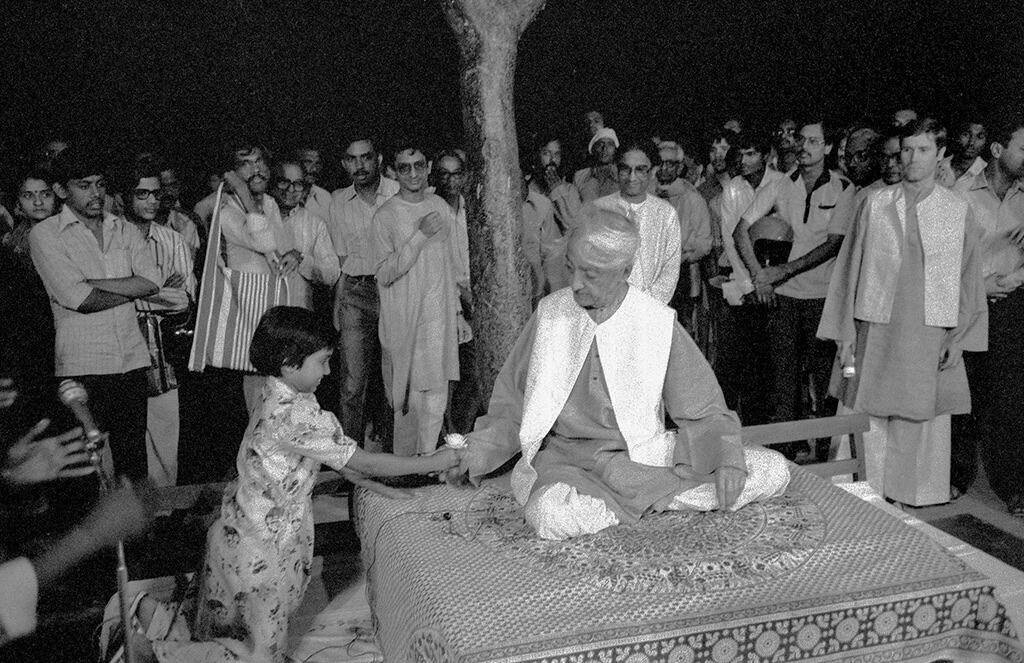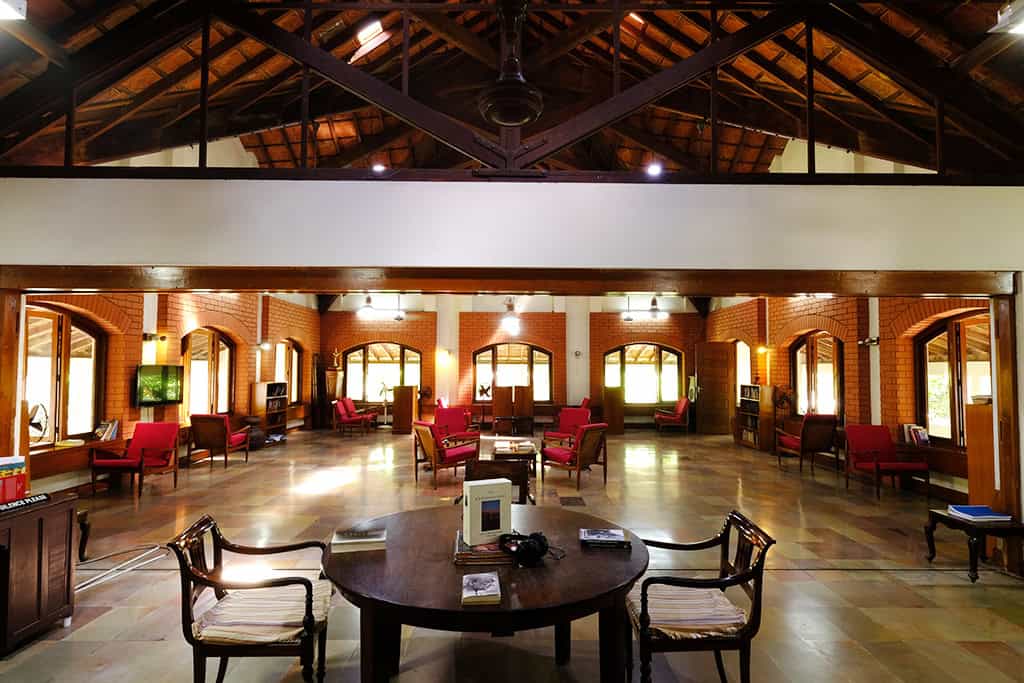J. Krishnamurti and Madras go back 116 years, and their relationship continues to this day. Vasanta Vihar at Greenways Road had been his home from the 1930s. It is also the Krishnamurti Foundation India’s headquarters and importantly a Study Centre and a Retreat. But it was a couple of kilometres away, at the Theosophical Society, Adyar, in 1909 that as a boy of 14 he was ‘discovered’ by the Theosophist and clairvoyant, Charles Leadbeater, as one who had ‘a most wonderful aura without a particle of selfishness’. And so to be groomed as ‘the World Teacher’. Krishnamurti’s father, also a Theosophist, had brought his children to Madras from Madanapalle earlier the same year. Mary Lutyens, daughter of Edwin Lutyens, architect of much of New Delhi, writes in ‘The Life and Death of Krishnamurti’ that the family was put up in a dilapidated cottage outside the campus of the Theosophical Society. With his younger brother Nithya, Krishnamurti walked six miles to and from the P.S. High School in Mylapore but not for long. Leadbeater and few others had taken upon themselves the task of training Krishnamurti and Nithya. In her biography of Krishnamurti, Pupul Jayakar quotes C. Jinarajadasa, who was to later be president of the Theosophical Society — ‘‘Meals, study, and games were on an absolute schedule intended to teach the boys alertness to time and circumstances. Bicycling was not for fun, but to teach self-reliance and resistance to fatigue. On one occasion they were made to cycle to Chingelpet and back, a total of 64 miles.’’

Krishnamurti and his brother Nithya with Leadbeater at the Theosophical Society, Adyar, 1909.
In 1882 the Theosophical Society had moved its headquarters to Adyar from America because its founders, Russian mystic Madame Helena Petrovna Blavatsky and the American, Colonel Henry Steel Olcott, had adopted as their occult creed many of the ancient traditions of the East.
In 1911 the International Order of the Star in the East was founded with Krishnamurti as its Head and Annie Besant (she was elected president of the Theosophical Society in 1907) and Leadbeater as its protectors. The object of the Order was to draw together all those who believed in the near ‘Coming of the World Teacher’. Krishnamurti gave up this position in 1929 at a gathering of more than 5,000 Star members at Ommen in the Netherlands. Excerpts from what he said: ‘‘I maintain that Truth is a pathless land, and you cannot approach it by any path whatsoever, by any religion, by any sect. That is my point of view and I adhere to that absolutely and unconditionally…You can form other organisations and expect someone else. With that I am not concerned, nor with creating new cages, new decorations for those cages. My only concern is to set man absolutely free.’’
Disassociating himself from the Theosophical Society, he continued to travel the world over for more than 60 years, giving talks, writing, holding dialogues and giving interviews. Or just sitting silently with those who came to him for help and advice.

Krishnamurti at Vasanta Vihar in January 1986, the last talk he gave in his life.
During his visit to the Society in Adyar in May 1933, he met Annie Besant for the last time before her death in September. He was to return to the TS headquarters only 47 years later in 1980 on the invitation of Radha Burnier who had just been elected president. In later years, while visiting Madras, Krishnamurti would visit the Theosophical Society and walk along the beach.
Among the prominent people Krishnamurti met in Vasanta Vihar was the Dalai Lama in the winter of 1956. The Dalai Lama was 21 then. That was the only meeting between them. In January 1979, Indira Gandhi who had been deposed from prime ministership, came to Vasanta Vihar to see him. That very evening she dropped in again to attend a concert by M.S. Subbulakshmi. Indira had met him on other occasions.
At the age of 90, on 4th January 1986 – at the last talk he ever gave – Krishnamurti said in Vasanta Vihar and I quote from Mary Lutyens’ book — ‘‘Creation is something that is most holy. That’s the most sacred thing in life and if you have made a mess of your life, change it. Change it today, not tomorrow. If you are uncertain find out why and be certain. If your thinking is not straight, think straight, logically. Unless all that is prepared, all that is settled, you can’t enter into this world of creation. It ends. (These two words are hardly audible, breathed rather than spoken. They can just be heard on the cassette. They could not have been heard by the audience.) Then, after a long pause he added, ‘This is the last talk. Do you want to sit together quietly for a while? All right, sirs, sit quietly for a while.’’ This writer was present at the talk arranged in the front of the house under the trees.
A month later, Krishnamurti died in his sleep on February 17 at his home in Ojai, California.
To buttress this article, I met Vishwanath Alluri, secretary of KFI, at Vasanta Vihar. Excerpts from our conversation:
…You may ask why the Foundation was set up when the Order of the Star was dissolved… Krishnamurti said it exists for dissemination of his teachings and for the schools as education of children was an important part of what he laid out. It is not a spiritual body from where enlightenment is emanating. For dissemination, we are not to send out propagandists and interpreters. His vision of life was not his teaching but the teaching of life itself. For him, it was always the teachings and never my teachings.

The Study.
Our schools do not have teacher-dominant classrooms and are known for their rural outreach and eco conservation programmes. The schools are at Bengaluru, Varanasi, Sahyadri near Pune and Rishi Valley in Madanapalle and Madras’ own ‘The School’ set up in 1973, now at Thazhambur near the OMR, and the newest, ‘Pathashaala’, at Elumichampatttu village in Tirukazhukundram taluk 80 km away from the city. Dedicating his home ‘Vasanta Vihar’ to posterity before his death, he said: “It must last a thousand years, unpolluted, like a river that has the capacity to cleanse itself.” To sum up, the spirit of the teaching is reflected in the decisions of the Foundation.

Vasanta Vihar, as it still remains.
I had a chance meeting with Mithavachan, a visitor from Bengaluru. We spoke as we walked around the grounds. I wondered if he found Krishnamurti’s teachings daunting. He didn’t see them as a body of knowledge to accumulate — or, as I finished the thought, to be accepted in toto. But rather as pointers to help one listen and perceive the actual facts of life, Mithavachan reflected. What sets apart Vasanta Vihar for him is that it is a peaceful place amidst a bustling city and there is no pressure here to conform to a school of thought, belief system or practice like meditation. He was sure that he was neither escaping from something nor did he expect anything out of the time spent here.
After being introduced to Anusha, a young mother, and an alumni of The School, I asked, weren’t the Krishnamurti Schools known to be different? Here’s what she said: ‘‘It’s not a conscious effort to be different. It’s about being authentic. The school gave me the physical and cultural space to constantly be in touch with myself. I questioned my routines, my beliefs, and my silences on issues around me.
‘‘The school created spaces for this everywhere. Physically and culturally too. Wednesday Assemblies, Culture Classes, and Class Teacher Periods gave me room to share with my teachers and peers what was happening inside me, what brought me joy, what troubled me.
‘‘The real insight came after I left. The outside world rarely offers these kinds of spaces. Instead, it pushes you to abandon your authentic self, to forget who you are. But the education I received gave me the resources to hold on to my voice even without those physical or cultural spaces. It taught me how to create them wherever I go.’’
Booklovers note that KFI’s no-fuss bookstore is not far away from the entrance to the verdant campus. As Vasanta Vihar is also a publishing centre, the shelves are a brimful with books neatly displayed. Most in English and a few in Tamil, Telugu, Malayalam, Hindi and Marathi. There are few a DVDs on sale. Tech savvy readers can download the ‘Awakening of Intelligence’ App. The link jkrishnamurti.in takes you to their classy web pages. Check out the free digital booklet ‘The Future of Humanity in the age of AI’.
Their telephone numbers are 91-44-24937803 / 24937596 and email: vvstudy@kfionline.org